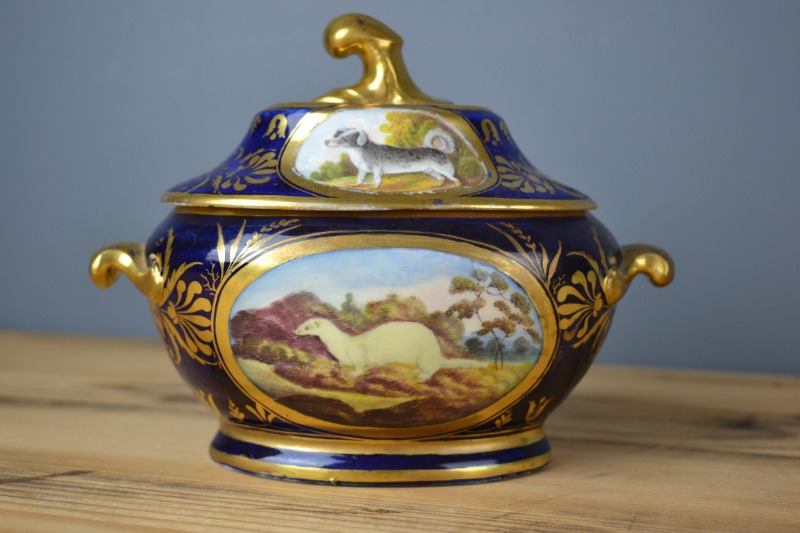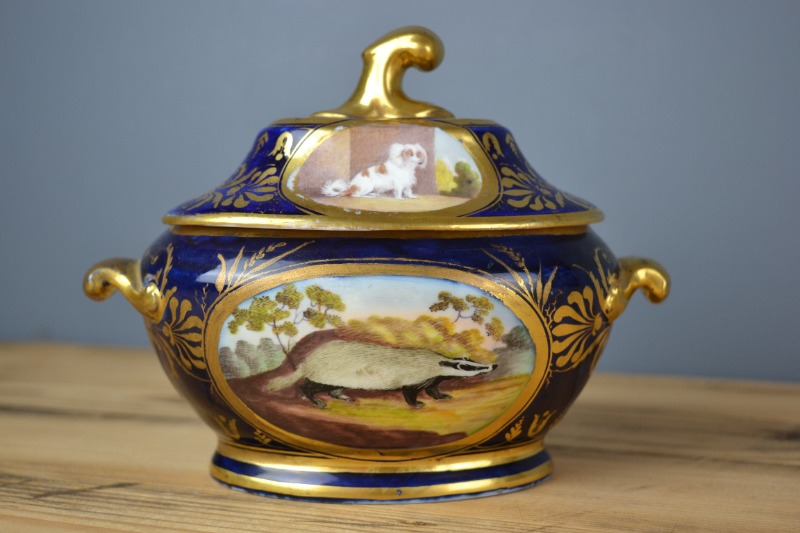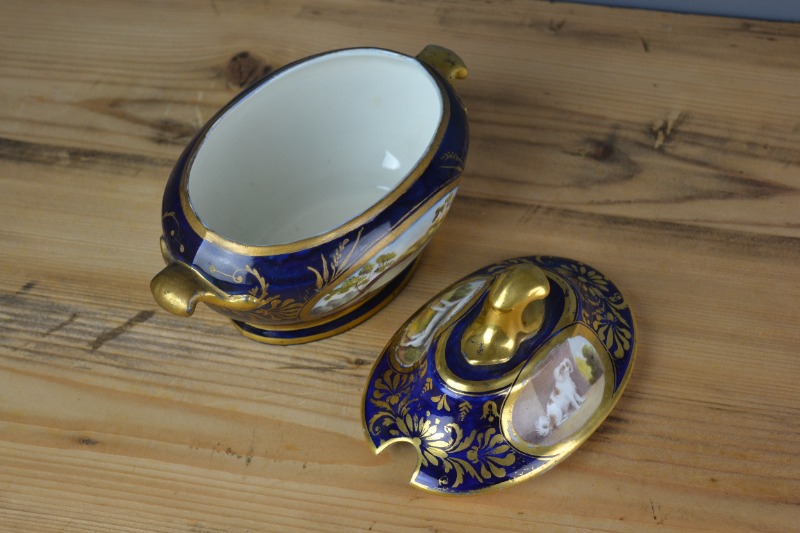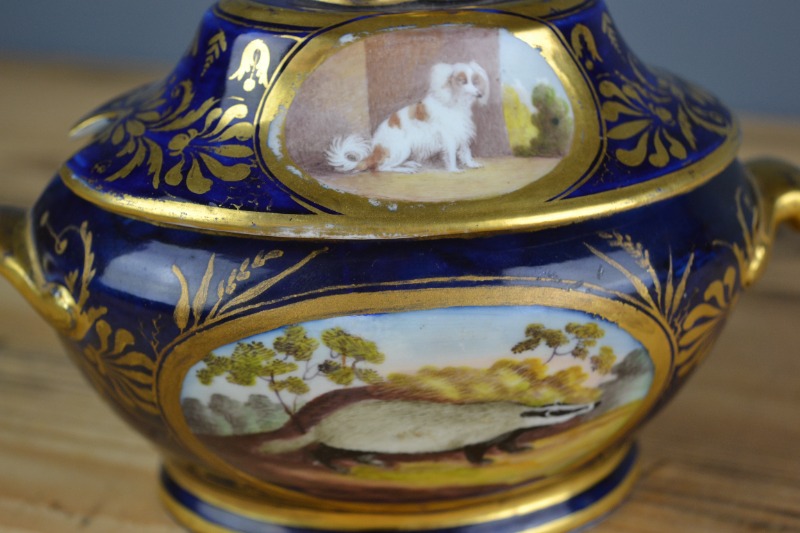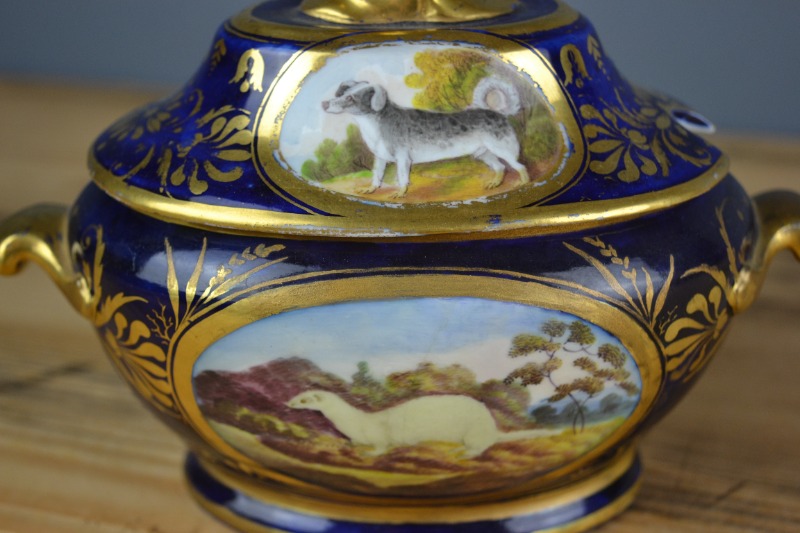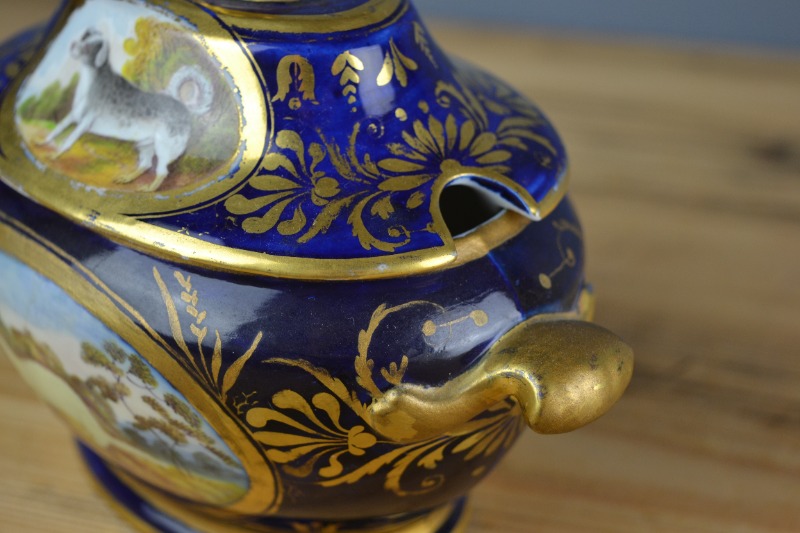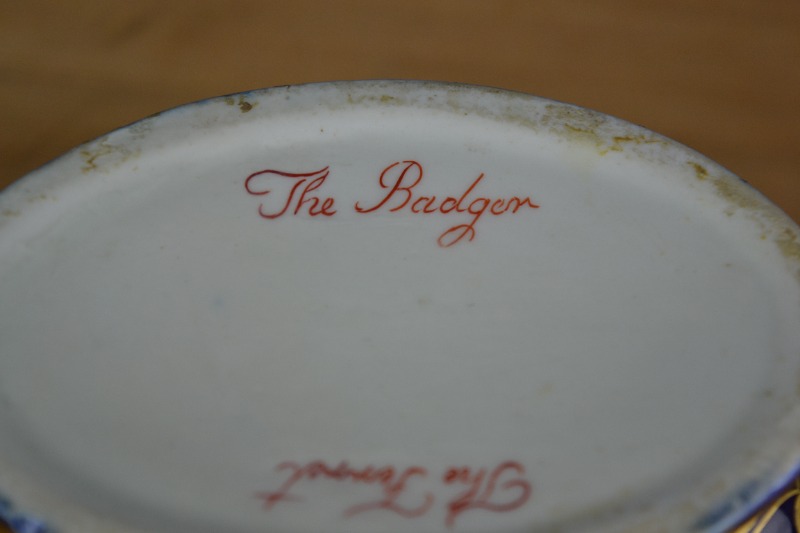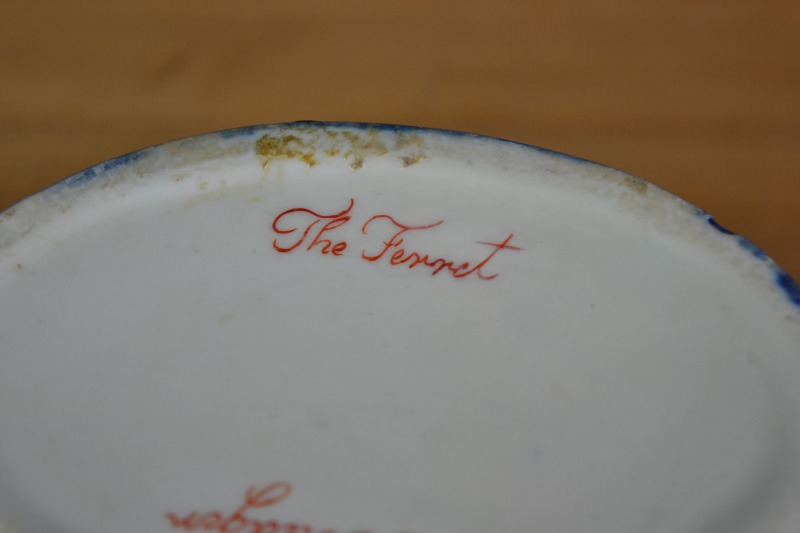Sugar Bowl and Lid From The Coalport Animal Service, c.1800-1805 (Very Rare - Only 1 Set Ever Made)
Age:
Circa 1800-1805
Material:
Porcelain
Dimensions:
18cm x 10cm x 14cm
Shipping:
Standard Parcel
Price:
SOLD
A sugar basin and lid from the Coalport animal service depicting individual animals from Berwick’s History of Quadrupeds of 1800. The central animal cameos are surrounded by a wide cobalt blue band, enriched by a highly decorative gilt border. Coalport did three services using these animals, but this was the most deluxe with more expansive landscapes around the animals and richer gilding. Depicted on the bowl are a ferret and a badger. On the lid is a (now extinct) turnspit dog and comforter dog. The name of each animal is written in iron red on the underside of each piece.
Wear to the gilding, but no chips, cracks or scratches. Other pieces from the service may be found in the Clive House Museum in Shrewsbury and the David Roche Collection in Adelaide.
Little is known about this Coalport Animal Service, other than the white china or blanks were made by John Rose’s Coalport Company in Shropshire circa 1800. Some pieces of the service made an unexpected appearance in 1970 when several pieces were offered on behalf of Mrs. Thilen from Sweden to the local authority-run Clive House Museum in Shrewsbury. Due to their importance, they were acquired with the assistance of the Museum and Galleries Commission and the V&A Purchase Grant Fund.
The source for the animals is Bewick’s History of Quadrupeds of 1800, which depicted more than 200 animals, ranging from the exotic to the domestic. These have been reproduced against different landscapes. While the painter is not known, there is speculation that it might have been Charles Muss (1779-1824), son of Italian artist, Beneficio Muss. He exhibited several works at the Royal Academy, including Dunkeld Castle in 1800 and produced an enamelled plaque with a named and dated view of the Coalport China Works in 1804.

